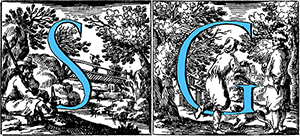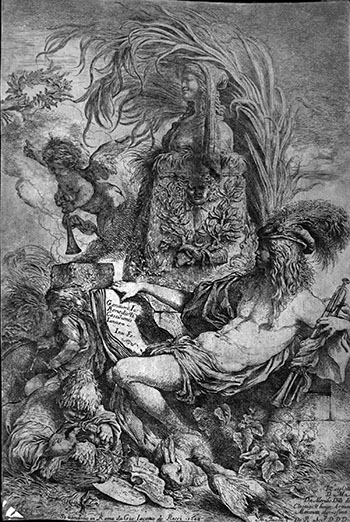
CASTIGLIONE Giovanni Benedetto
‘il Grechetto’ (Genoa 1609 – Mantua 1665)
Genoese engraver and painter, son of Giovanni Francesco and Giulia Varese.
He worked, as a youngster, at the atelier of the painter Giovanni Battista Paggi and after his death he continued his training at the workshop of the painter Sinibaldo Scorza. This latter had approached engraving and probably Castiglione learnt the art of etching from him. Towards 1625 he studied the works of Van Dyck, at that time in Genoa, who he was clearly influenced from.
Around 1632 he moved to Rome where he remained until 1651, except for some returning to Genoa.§
In 1641 he married Maddalena Coturia and the following year his son Giovanni Francesco was born.
In 1645-46, he developed an intense pictorial and engraving activity. In 1646 his daughter Livia Maria and at the end of 1647 Ortensia were born.
In the following years he moved to Venice and then to Mantua. During the Roman period he approached Nicolas Poussin’s intellectual classicism. He left important paintings in Rome, Naples, Venice and Florence, but especially in Genoa and Mantua where he spent much of his life.
He painted portraits, historical episodes and biblical scenes, but he distinguished himself in particular in painting popular markets and in rural scenes, often charachterized by the presence of animals. Even more important, however, it appears to be his figure as etcher.
The work of Castiglione includes sixty etchings and twenty-four ‘monotype’, a technique he invented and that was applied also by the English John Baptist Jackson and the French impressionist Edgar Degas in the eighteenth and nineteenth centuries, respectively.
The ‘monotype’ is a printing technique in which, on the inked matrix, the author performs, with different tools, a drawing by removing the ink, so that the sign will appear white on a dark background. The final work is unique, but sometimes a second and a third copy can be obtained without the addition of ink, but the contrasts are less marked.
All the subjects of Castiglione’s prints were of his own invention and mostly represent biblical scenes and philosophical themes related to vanitas, flow of time, or melancholy. He had the merit of being among the first to conceive engraving as an autonomous artwork and not only a reproduction work as it was generally considered.
He was the first in Italy to appreciate and to instil in his graphic work the charm rising up from the marvellous etchings by Rembrandt. Castiglione has influenced Italian and French graphics by anticipating the Venetian whims of Tiepolo, the silver tones and delicacy of Piranesi’s traits and the lyric jokes of Fragonard.
Giovanni Benedetto had followers both in his brother Salvatore and in his firstborn son Giovanni Francesco. The exact date of his death is unknown, although it should probably have occurred in Mantua in 1665, as reported by Paolo Bellini (1982).





